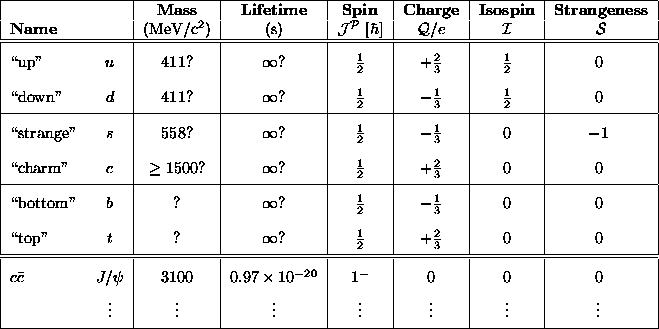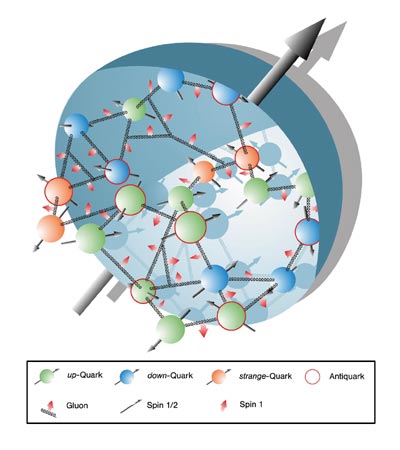

Similar estimates for the flavor diagonal and off-diagonal susceptibilities are also presented. Answer (1 of 3): There are three similarly named attributes here, which is really confusing. These derivatives give the generalized susceptibilities with respect to quark and isospin numbers. The asymmetry is evaluated by studying the angular distributions of the top and antitop quark decay products, which are used as spin analysers 200: 1 d2N. Emergence of a Complete Heavy-Quark Spin Symmetry Multiplet: Seven Molecular Pentaquarks in Light of the Latest LHCb Analysis Ming-Zhu Liu, Ya-Wen Pan, Fang-Zheng Peng, Mario Snchez Snchez, Li-Sheng Geng, Atsushi Hosaka, and Manuel Pavon Valderrama Phys. Comparisons are made between these spin decomposition results and lattice QCD =0. Mesons were originally predicted as carriers of the force that binds protons and. Both come in higher-energy versions where the spin is augmented by orbital angular momentum. The down quark is therefore found to carry almost no total angular momentum due to cancellations between spin and orbital contributions. Sea Quark Spin Surprise The latest data from the Relativistic Heavy Ion Collider reveal that the quark spin contribution (green puzzle piece)specifically the contribution from a sea of antiquarksis more complex than previously thought. Pseudoscalar mesons (spin 0) have the lowest rest energy, where the quark and antiquark have opposite spin, and then the vector mesons (spin 1), where the quark and antiquark have parallel spin. At a scale of Q 2 = 4 GeV 2 we find that the up and down quarks carry an intrinsic spin and orbital angular momentum of S u = 0.534, S d = -0.214, L u = -0.189, and L d = 0.210, whereas the gluons have a total angular momentum of J g = 0.151. Furthermore we perform a flavor decomposition of the spin-dependent to spin-independent quark distributions ratios in the nucleon and find that relativistic. For example, an up quark with a spin of + 1 / 2 along the z axis is denoted by u.

The inclusion of multiple species of diquarks is found to have a significant effect on the flavor decomposition, and resolving the internal structure of these dynamical diquark correlations proves essential for the mechanical stability of the proton. The component of spin along a given axis by convention the z axis is often denoted by an up arrow for the value + 1 / 2 and down arrow for the value 1 / 2, placed after the symbol for flavor. From these (and previously calculated helicity-independent GPDs) we obtain the spin decomposition of the proton, including predictions for quark intrinsic spin and orbital angular momentum. Here, we calculate the leading-twist helicity-dependent generalized parton distributions (GPDs) of the proton at finite skewness in the Nambu–Jona-Lasinio (NJL) model of quantum chromodynamics (QCD).


 0 kommentar(er)
0 kommentar(er)
